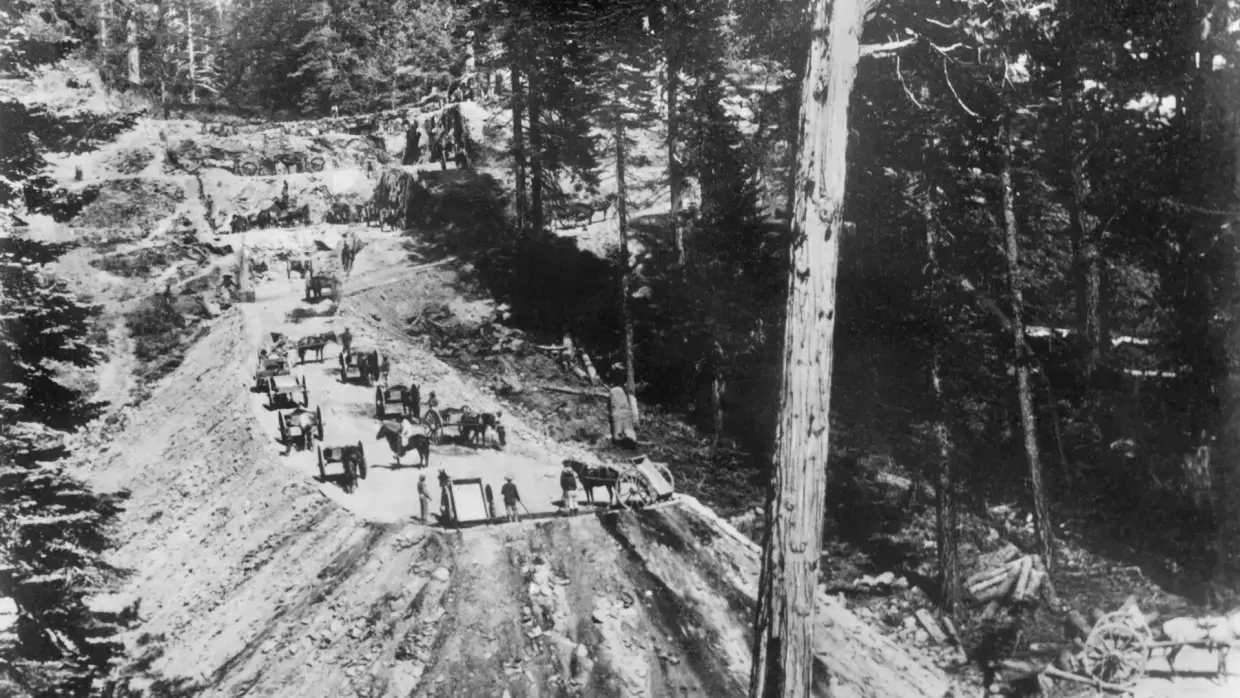The Transcontinental Railroad stands as a monumental achievement in American history, embodying tenacity and innovation. Yet, within its steel rails and sprawling tracks lies a narrative often obscured by the grandeur of its accomplishment—the indispensable contribution of Chinese laborers. Through the lens of cultural relativism, we can better appreciate how their arduous efforts not only shaped the railroad but also reflected a complex interplay of cultures, identities, and societal values.
To arrive at a profound understanding of this historical chapter, it is essential to explore the labyrinthine journey of the Chinese immigrants who came to America during the mid-19th century. They ventured across the Pacific Ocean, propelled by dreams of prosperity and the promise of opportunity. En masse, they embarked on a journey reminiscent of the mythological hero’s quest, navigating an arcane world filled with obstacles and uncertainties. This migration was driven by a confluence of socio-economic factors in China, including the devastating effects of the Opium Wars and the internal turmoil encapsulated in the Taiping Rebellion.
Upon their arrival in the United States, these immigrants were met with a curious juxtaposition of expectation and reality. The allure of the American Dream often faded against a backdrop of laborious work, discrimination, and xenophobia. As they took up the mantle of laborers on the Transcontinental Railroad—a project that would link the eastern and western coasts—they embodied resilience in the face of daunting adversity. In this respect, their experiences can be seen as a profound commentary on human dignity when placed against the relentless machinations of progress and industry.
In the harsh environments of the Sierra Nevada and the rugged plains of the West, Chinese workers faced grueling conditions that tested their very limits. They engaged in perilous tasks: blasting tunnels through solid rock, laying tracks over treacherous terrain, and enduring sub-zero temperatures. Their work, imbued with a sense of collective purpose, not only advanced a critical infrastructure project but also forged a tight-knit community that transcended cultural barriers. This solidarity, a tapestry woven from diverse threads of identity, illustrated a nuanced form of cultural relativism, one that permitted these laborers to navigate and negotiate their own identities within a foreign landscape.
Cultural relativism posits that one must understand a culture within its own context, which is particularly relevant when examining the practices and values of the Chinese laborers. Despite societal perceptions that often depicted them as mere “coolies,” the workers brought with them a rich heritage steeped in Confucian values and communal ethics. Their work ethic exemplified a striking loyalty not just to their employers but also to one another—a testament to the deep-seated cultural philosophies that prioritized harmony, collectivism, and perseverance.
Moreover, the labor on the railroad inadvertently fostered cultural exchanges that would ripple through generations. The introduction of Chinese culinary practices and traditions to American society introduced new flavors and dimensions to the culinary landscape, an evocative metaphor for the blending of cultures. Just as the iron rails of the railroad melded two coasts, the culinary innovations created a bridge between East and West, illustrating how the Chinese contribution transcended mere physical labor and evolved into a cultural infusion.
However, this metamorphic experience was not without its contradictions. As the railroad opened new avenues for trade and migration, it simultaneously solidified racial divisions and prejudices. The very labor that built America’s infrastructure laid the foundation for the Chinese Exclusion Act of 1882, a landmark piece of legislation that harshly curtailed Chinese immigration and vilified those who had helped shape the nation’s destiny. This paradox highlights the complexities of cultural relativism, where the laborers became both the architects of prosperity and the targets of exclusion, reflecting a society grappling with its own notions of race, belonging, and identity.
This darker aspect of history serves as a reminder that progress often bears a dual visage. While the Transcontinental Railroad heralded an age of connectivity and economic expansion, it simultaneously entangled itself in issues of social justice and equality. The narratives of the Chinese railroad workers challenge us to reconsider the paradigms through which we view labor and migration, urging a more nuanced appreciation of their sacrifices.
In retrospect, the contributions of Chinese laborers to the Transcontinental Railroad illuminate the broader human experience. Their journey is emblematic of endurance and agency, a reminder that every railroad, every road paved with sweat and determination, is not merely a pathway through land but also a conduit for stories untold. In this way, their legacy is etched not only in the iron rails that support the modern world but also in the tapestry of American identity that continues to evolve.
The ongoing recognition of such narratives encourages a deeper engagement with cultural relativism, advocating for empathy and understanding in a world rife with division. As we traverse the intricate intersections of history and identity, we are reminded that every laborer, immigrant, and worker contributes to the richness of society. Their stories are pivotal, serving as a quintessential illustration of how hard work and perseverance can transcend borders and construct bridges where none previously existed.
